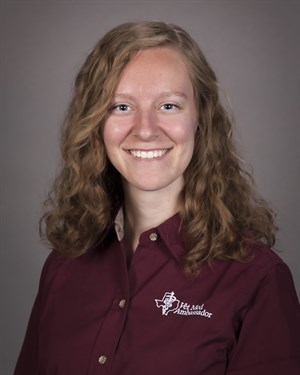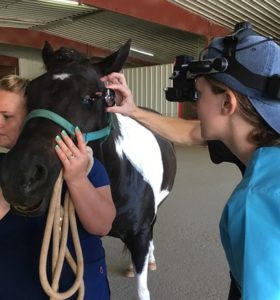 As the new curriculum is implemented here at Texas A&M’s College of Veterinary Medicine, more and more courses are designed to be fully clinically relevant. For the students, this means we get to play doctor from day one, as overwhelming as that may be. Here are some examples of what my fellow second-year veterinary students and I have seen among some of our classes this semester.
As the new curriculum is implemented here at Texas A&M’s College of Veterinary Medicine, more and more courses are designed to be fully clinically relevant. For the students, this means we get to play doctor from day one, as overwhelming as that may be. Here are some examples of what my fellow second-year veterinary students and I have seen among some of our classes this semester.
“Charlie is a 6-year-old MC Boston Terrier who presented to your clinic with a one-month history of seizures that have been increasing in frequency and duration. After reviewing the following complete history and introductory blood work, write a prescription for an appropriate drug for Charlie.”
Thus begins another pharmacology lab.
My classmates are split into groups of five or so, each with a different case profile. For this lab, the groups are paired, with one acting as the emergency service and the other as the neurologists.
While every case is different, they all have seizures, as we are focusing on anti-convulsants in lecture. We will spend about half an hour combing resources and notes trying to come up with an appropriate treatment plan before going over all of the cases with the clinician who is presiding over the lab.
We discuss why certain drugs must not be given to certain patients and why one option may be marginally better than another. The clinicians also try to emphasize that sometimes there is no one correct choice; sometimes they are all bad and you may just have to choose the one that is least offensive.
Every pharmacology lab unrolls in much the same way, covering most of the cases we are likely to see in practice and emphasizing those where the decision-making process is not easy.
Parasitology is fairly similar to pharmacology lab.
The beginning of the semester felt like we were studying an entomologist’s encyclopedia: “Here are a dozen ticks (or mites, or lice, or fleas, or nematodes); figure out the best way to tell them apart under a microscope.”
Fortunately, after deciding we had successfully jammed all of that information into our brains, we were able to move on to clinically relevant discussions. Different professors discussed the parasites we were likely to find on the most commonly treated species, emphasizing those that are very common or very detrimental to the animal or the producer’s wallet.
Most of the time, this meant working through a case: “A commercial dairy-goat producer has been having issues with her goats not keeping weight on, and a few have died. She deworms the whole herd with Ivermectin every two months and didn’t have any problems until the rains started a few weeks ago, etc.” Your job as the student is to correctly determine the parasite, treat the parasite, and then educate the client on the best method of prevention for her herd (hint—it’s not “deworm every two months with Ivermectin”).
Throughout this exercise, common parasites of the affected animal are available on slides or in specimen jars, and clinicians are there to answer any questions that may come up. We were also able to do several important clinical diagnostic tests, things vets do every day, like fecal flotation and heartworm tests.
Pathology lab is for those who like getting your hands dirty and staring at gross things; it’s the study of how disease affects tissue, so there’s nothing normal in pathology lab. You’ll see abscesses and cancer, pneumonia and partially healed wounds, nasal cavities that have lost all structure and mineralized vessels.
The best part about path lab is that all of the pathologists love making lesions “relatable” and easy to remember. So, it’s not a lymph node filled with caseous exudate; it’s a ball of your favorite cheese. It’s not chronic passive hypertension of the liver; it’s a “nutmeg liver.” This is made extra fun when they schedule pathology lab right after lunch.
You may get to put your hands on some necrotic intestines and pull fibrin off of a cow heart (wearing gloves, of course), but you will be learning while its happening. Pathology lab is designed as a hands-on, practical workthrough of the disease discussed in class, and we are expected to identify lesions that are placed in front of us.
That can be a lot to ask of a stressed out second-year, but it closely resembles what we will see in practice one day, so we persevere. I appreciate having these labs so that we can hear cases that are actually seen in the hospitals and work through them ourselves with samples and specimens beside us, even if we get it wrong; they’re bringing us one step closer to the dream of doing it all again one day as Doctors of Veterinary Medicine.



 Veterinary school is hard.
Veterinary school is hard.